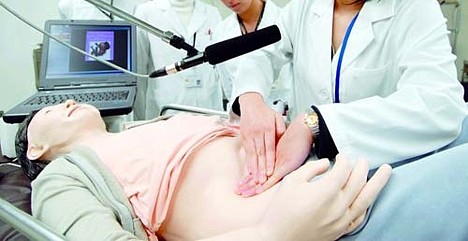 Researchers at Gifu University's Graduate School of Medicine have developed a robotic patient that can respond verbally to questions about how it feels and move its body in ways that exhibit the symptoms of its ailment. The researchers, who developed a less sophisticated "sick" droid last year, claim this robot patient is the world's first to exhibit symptoms in the way it moves.
Researchers at Gifu University's Graduate School of Medicine have developed a robotic patient that can respond verbally to questions about how it feels and move its body in ways that exhibit the symptoms of its ailment. The researchers, who developed a less sophisticated "sick" droid last year, claim this robot patient is the world's first to exhibit symptoms in the way it moves.
Modeled after an adult female and equipped with body parts that move in a smooth, human-like way, the android is designed to provide students with valuable hands-on experience in diagnosing rare medical conditions. For example, when suffering from myasthenia gravis -- an often misdiagnosed neuromuscular disease leading to muscle weakness and fatigue -- the robot tells the doctor its eyelids are heavy, and it changes its facial expression, slowly relaxes its shoulders and hunches forward.
"It was difficult to get the shoulder joints and shoulder blades to move like a human," says researcher Yuzo Takahashi. "In the future, we want to program the robot with more symptoms and create a very realistic learning tool." If all goes well, the robot will become part of the curriculum next year.
[Source: Yomiuri]

